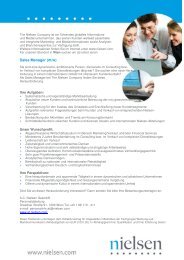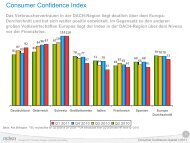Create successful ePaper yourself
Turn your PDF publications into a flip-book with our unique Google optimized e-Paper software.
3. Store Attributes. These may range from physical store<br />
attributes like size and presence of specific departments<br />
to proximities to high traffic intersections or landmarks<br />
like beaches or universities.<br />
4. Performance Attributes. These can range from basic<br />
sales rates to promotion response to consumer-driven<br />
category opportunity gaps.<br />
Dynamic clustering brings criteria together into a cohesive<br />
framework that leverages critical differences within the store<br />
segments. Some companies may be able to execute effectively<br />
using just two clusters; others may require 200; but clustering<br />
is a necessary prerequisite for integrating action to “crack<br />
the retail C.O.D.E.”<br />
Step 4: Executing for the consumer<br />
The final step in the C.O.D.E. approach takes us full circle,<br />
back to the consumer and how best to shape and direct<br />
activities to each store or cluster’s shoppers. Merchandising<br />
strategies based on item roles, promotional and sampling<br />
programs, space and facing allocations—all tailored to<br />
defined dynamic clusters—can now be managed by following<br />
the four-step C.O.D.E.<br />
The C.O.D.E. approach makes high definition marketing<br />
possible, allowing marketers and retailers to zero in at the<br />
most granular level possible—the store. Working from a<br />
shared viewpoint, with shared definitions for target clusters<br />
or stores, manufacturers and retailers can collaborate on<br />
promotional and assortment strategies with optimal appeal<br />
to the right set of consumers, and operational strategies that<br />
take cost out of the system by reducing inefficiencies such as<br />
out-of-stocks and distribution voids.<br />
The C.O.D.E. holds the secret to finding opportunity gaps,<br />
making the most of consumer profile information, and<br />
improving logistical execution to squeeze more bottom-line<br />
profit out of even more top-line sales.<br />
See pages 48 and 49 for a case study that illustrates the<br />
C.O.D.E. process in action. C i<br />
46 Fall/Winter 2006











